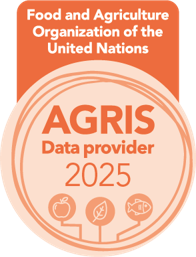Participatory assessment of lentil (Lens culinaris Medik.) production practices in marginal dry lands of Wag-lasta, Ethiopia
Abstract
Lentil (Lens culinaris Medik.) is an important legume for human nutrition, animal feeding and soil fertility enhancement in Wag-lasta areas of Ethiopia. Despite its importance, concerned actors in the extension system have inconsistencies on the efficient production practices. The participatory assessment of different lentil production practices was thus carried out involving twenty-three farmers in the marginal dry lands of Wag-lasta area. The experiment was designed to evaluate and demonstrate the performance of different lentil production practices to farmers and extension personnel to settle the paradox in the extension system. It was directed through comparing the improved variety with its full production package (IPP) against the local variety with full package (LPP) and local variety under farmers’ practice (LFP). Agronomic, economic and preference data were collected and analysed in descriptive statistic, ANOVA, partial budgeting and weighted ranking matrix. The combined result indicated that LPP, LFP and IPP provided mean grain yields of 806, 584 and 486 kg ha-1, respectively. Accordingly, LPP has 27.5 and 39.7% yield advantage over LFP and IPP, respectively. The marginal rate of return of LPP is 334.9 and 411% in Sekota and Lalibela districts in that order. The overall weighted ranking matrix also shows that LFP and LPP were farmers’ first and second choices in Sekota but vice versa in Lalibela district. Farmers and experts in the extension system thus perceived and approved the prominence of local cultivar under full package practice. Therefore, large-scale dissemination of the local cultivar with its full package components is safely recommended.
Keywords:
Lentil (Lens culinaris Medik.), Marginal rate of return, Preference parameter, Weight ranking matrixDownloads
Published
How to Cite
Issue
Section
Copyright (c) 2020 Agriculture and Environmental Science Academy

This work is licensed under a Creative Commons Attribution-NonCommercial 4.0 International License.

